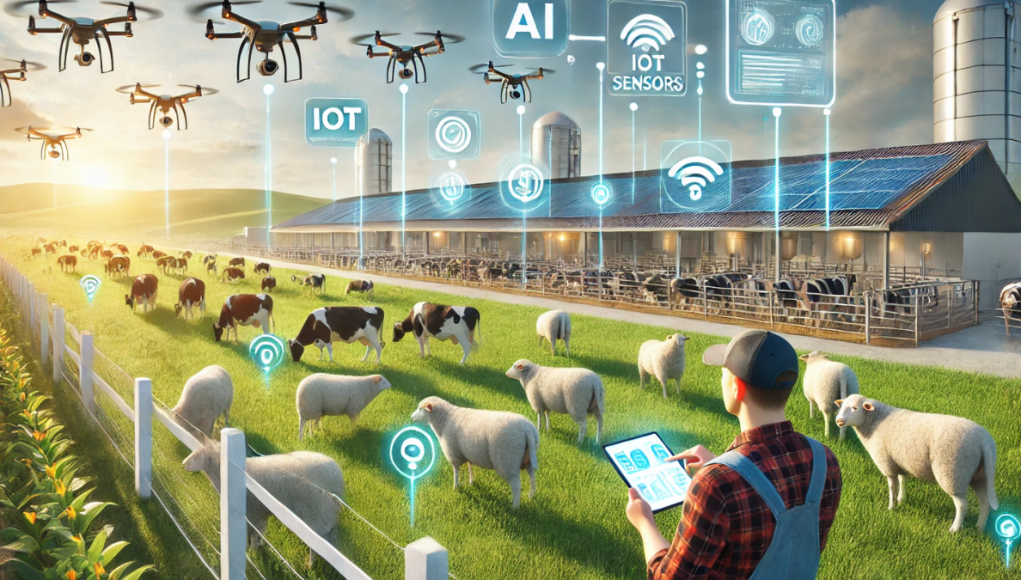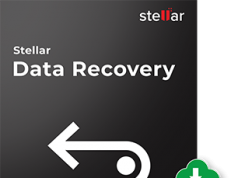In modern farming, AI-powered tools for livestock management are becoming a necessity. These advanced systems use artificial intelligence to monitor, track, and manage livestock with incredible precision. From ensuring animal welfare to boosting farm efficiency, AI helps farmers make informed decisions based on real-time data. Whether it’s through automated feeding systems, disease detection, or environmental monitoring, AI provides valuable insights that transform traditional livestock farming.
AI systems collect and analyze vast amounts of data from cameras, sensors, and IoT devices, allowing farmers to react quickly to changes in animal health, feeding needs, or even weather conditions. This precision farming method leads to more sustainable, humane, and productive operations. As farms grow in size and complexity, AI tools are increasingly crucial for optimizing resources and ensuring the health and well-being of livestock.
Benefits of AI-Powered Livestock Tools
When considering AI tools for livestock management, it’s important to understand their key benefits. These tools streamline farm operations, improve animal welfare, and help farmers work more sustainably. Here are some essential benefits to consider:
1. Early Disease Detection:
AI systems monitor animal health in real-time, quickly identifying signs of disease or stress. This early detection allows for swift intervention, reducing the risk of disease spreading.
2. Optimized Feeding Practices:
AI-powered feeders calculate the exact amount of food each animal requires based on real-time data. This minimizes waste and ensures animals receive the correct nutrition, improving both health and productivity.
3. Environmental Monitoring:
AI tracks environmental factors like temperature, humidity, and ventilation, ensuring optimal conditions for livestock. This monitoring helps prevent heat stress or dehydration, improving overall animal welfare.
4. Efficient Resource Use:
AI helps farms use resources like water and feed more efficiently, reducing costs and environmental impact. This not only saves money but also promotes sustainability.
5. Labor Reduction:
With AI handling tasks such as feeding, health monitoring, and even sorting, farm labor is reduced. This allows farmers to focus on more critical aspects of farm management.
How to Choose the Right AI Tools for Livestock Management
Selecting the right AI tools for your farm depends on your specific needs and the type of livestock you manage. Here are a few tips to help guide your decision:
1. Assess Farm Size:
Larger farms may benefit from comprehensive tools that include GPS tracking, automated feeding, and environmental controls. Smaller farms might prioritize health monitoring and feeding systems.
2. Consider the Livestock:
Different animals have different needs. For instance, dairy farms may require systems focused on milk production, while poultry farms might prioritize temperature control and disease prevention.
3. Scalability:
Choose tools that can grow with your farm. Look for scalable solutions that allow you to add more sensors, cameras, or data collection points as your livestock numbers increase.
4. Ease of Integration:
Ensure that the AI tools you choose can easily integrate with your existing systems, such as IoT devices or farm management software.
5. Budget:
AI tools range widely in price. It’s essential to weigh the cost against the potential benefits in terms of increased productivity, reduced labor, and improved animal health.
AI-Powered Tools for Livestock Management
Here’s a review of 15 leading AI-powered tools that are transforming livestock management:
1. FarmAi
Overview:
FarmAi utilizes machine learning and computer vision to continuously monitor livestock in real-time. By capturing footage from multiple cameras, it automates tasks like tracking animal behavior, welfare, and operational efficiency. It’s a powerful tool for large-scale farms looking for scalable, efficient solutions.
Features:
- 24/7 monitoring with 30+ cameras.
- Real-time animal behavior tracking.
- Automates incident reporting.
- Detects abnormal patterns in animal interactions.
- Provides detailed daily summaries for review.
- Reduces human labor for monitoring.
- Scalable to various farm sizes.
Pros:
- Continuous monitoring without human intervention.
- Improves animal welfare and operational efficiency.
- Scalable for large operations.
Cons:
- High initial costs for hardware and software setup.
2. Ida by Connecterra
Overview:
Ida is a smart assistant for dairy farms, offering data-driven insights to enhance productivity and herd health. It tracks the behavior of each cow and provides real-time alerts for any deviations in normal behavior, helping farmers make better decisions.
Features:
- Tracks feeding, activity, and health.
- Benchmarks farm data against global standards.
- Real-time alerts for abnormal behavior.
- AI-powered insights for farm efficiency.
- User-friendly mobile app interface.
- Cloud-based storage of health data.
- Recommendations to improve herd productivity.
Pros:
- Helps farmers benchmark their farm against global standards.
- Enhances herd health with real-time alerts.
- Scalable and adaptable for multiple farms.
Cons:
- Requires regular data input for accuracy.
3. CattleEye
Overview:
CattleEye focuses on detecting lameness in dairy and beef cattle using AI. It uses video footage to analyze how cows move and alerts farmers to potential health issues like lameness, which can lead to productivity loss if left untreated.
Features:
- AI-driven lameness detection.
- Real-time video analysis of cattle movement.
- Early detection of health issues.
- Automated reports and alerts.
- Reduces manual labor for health monitoring.
- Cloud storage for health data.
- Integration with farm management software.
Pros:
- Improves herd health by detecting lameness early.
- Reduces labor through automated monitoring.
- Easy-to-use system with automated reports.
Cons:
- Requires additional hardware investment for video surveillance.
4. Moocall
Overview:
Moocall offers an innovative solution to monitor calving. The tool alerts farmers when a cow is close to giving birth by analyzing tail movements. This helps reduce the risk of calving complications and allows for timely intervention.
Features:
- Calving prediction using tail movement data.
- Real-time alerts via SMS or app.
- Long battery life for continuous monitoring.
- User-friendly mobile app interface.
- Non-invasive sensor for easy use.
- Provides historical calving data.
- Lightweight and durable design.
Pros:
- Prevents complications during calving.
- Easy to set up and use.
- Affordable for farms of any size.
Cons:
- Limited to calving alerts.
5. SomaDetect
Overview:
SomaDetect uses AI to analyze milk quality in real-time, helping dairy farmers improve milk production and detect early signs of mastitis. It monitors fat, protein, and somatic cell counts, providing vital information for herd management.
Features:
- Real-time milk quality monitoring.
- Detects fat, protein, and somatic cell levels.
- Helps identify mastitis early.
- Cloud-based data analytics.
- Compatible with existing milking systems.
- AI-powered insights for improving milk quality.
- User-friendly dashboard.
Pros:
- Improves milk quality and herd health.
- Provides real-time analysis for early issue detection.
- Easy to integrate into dairy operations.
Cons:
- Focused mainly on milk quality; not suitable for other livestock.
6. Nedap Livestock Management
Overview:
Nedap is an advanced livestock management system that automates various tasks such as feeding, heat detection, and health monitoring. It integrates data from multiple sensors, providing farmers with a holistic view of their livestock.
Features:
- Automated heat detection and fertility tracking.
- Monitors animal activity and health.
- Precision feeding systems for optimized nutrition.
- AI-based animal identification and sorting.
- Cloud-based data storage.
- Integration with other farm management tools.
- Real-time alerts for health anomalies.
Pros:
- Comprehensive livestock management solution.
- Reduces manual labor with automation.
- Improves farm efficiency and productivity.
Cons:
- Expensive for smaller farms.
7. Scraper AI
Overview:
Scraper AI offers a solution for keeping livestock facilities clean and hygienic. It uses AI to automate cleaning processes, ensuring the barn remains sanitary and reducing the risk of disease spread among livestock.
Features:
- Automated cleaning of livestock pens and barns.
- AI-powered navigation and obstacle avoidance.
- Real-time monitoring of barn conditions.
- Adjustable cleaning schedules.
- Reduces labor costs for cleaning.
- Data collection for improved sanitation.
- Integration with farm management software.
Pros:
- Improves barn cleanliness and livestock health.
- Reduces labor and operational costs.
- Easy to integrate into existing farm setups.
Cons:
- High initial cost for equipment setup.
8. SenseHub Dairy
Overview:
SenseHub Dairy is a herd management tool that uses AI to monitor individual cow activity, health, and fertility. It provides real-time data and recommendations to improve productivity and reduce disease outbreaks.
Features:
- Real-time monitoring of cow activity and health.
- AI-driven fertility and heat detection.
- Automated health alerts and reports.
- Cloud-based data access for easy monitoring.
- Precision feeding recommendations.
- Detailed insights into herd productivity.
- Integration with farm management tools.
Pros:
- Improves cow health and reproductive efficiency.
- Provides real-time data for better decision-making.
- Easy to use with existing systems.
Cons:
- Primarily designed for dairy farms.
9. Vence
Overview:
Vence uses AI and virtual fencing technology to manage grazing patterns and animal movement. It eliminates the need for physical fences, allowing farmers to control where their livestock graze through an app.
Features:
- Virtual fencing technology for grazing management.
- GPS tracking of animal movements.
- Mobile app for real-time control and monitoring.
- Automated notifications for animal movement.
- Reduces labor associated with fencing.
- Increases pasture efficiency.
- Environmentally friendly grazing practices.
Pros:
- Reduces costs and labor for fencing.
- Improves grazing management and pasture health.
- Easy-to-use app for controlling livestock.
Cons:
- Requires GPS collars for each animal.
10. Allflex Monitoring
Overview:
Allflex Monitoring is a comprehensive tool that tracks the reproductive, health, and nutritional status of livestock. It uses AI to provide actionable insights into improving farm productivity and animal welfare.
Features:
- AI-powered reproductive and health monitoring.
- Heat detection for improved breeding cycles.
- Precision feeding insights.
- Real-time health alerts for early disease detection.
- Integration with milking systems.
- Cloud-based data access.
- Detailed reports for better farm management.
Pros:
- Comprehensive monitoring of livestock health and nutrition.
- Improves reproductive efficiency.
- Easy to integrate with existing systems.
Cons:
- Best suited for larger farms.
11. AeroVironment Quantix
Overview:
AeroVironment Quantix is an AI-powered drone that provides aerial surveillance of livestock, helping farmers monitor large herds over expansive areas. The drone captures high-resolution images and data, providing real-time insights into animal behavior and health.
Features:
- AI-powered aerial surveillance.
- High-resolution imagery of livestock and terrain.
- Real-time data for monitoring animal health.
- GPS tracking for location and movement analysis.
- Automated flight paths for ease of use.
- Cloud-based data storage.
- Detailed reports on livestock health.
Pros:
- Reduces the need for manual herd monitoring.
- Covers large areas efficiently.
- Provides real-time insights into livestock health.
Cons:
- High cost for drones and maintenance.
12. Cainthus
Overview:
Cainthus uses computer vision and AI to monitor dairy herds. By analyzing video footage, the system tracks feeding, drinking, and resting habits, providing actionable insights to improve animal welfare and productivity.
Features:
- AI-powered video monitoring of herds.
- Tracks feeding, drinking, and resting patterns.
- Provides insights for improving cow health and productivity.
- Automated reports on herd behavior.
- Cloud-based data access.
- Integration with other farm management systems.
- Custom alerts for abnormal behavior.
Pros:
- Helps improve herd productivity.
- Reduces manual labor
13. CowManager
Overview:
CowManager is an AI-based tool designed for dairy and beef farms. It monitors cows’ health, fertility, and location using ear sensors. The system provides real-time data, allowing farmers to act promptly in cases of disease or breeding opportunities.
Features:
- Real-time health and fertility monitoring through ear sensors.
- Early detection of diseases based on behavior and temperature.
- GPS tracking of cows for location management.
- Provides alerts on heat cycles for breeding efficiency.
- Cloud-based data analysis for continuous improvement.
- Detailed insights into feeding and rumination patterns.
- Scalable for large herds.
Pros:
- Improves herd health and fertility rates.
- Easy-to-use interface with real-time alerts.
- Scalable for farms of all sizes.
Cons:
- Requires ear sensors for each cow, which can increase costs.
14. Anymal
Overview:
Anymal is a robot designed to autonomously monitor livestock farms. Powered by AI and computer vision, it patrols barns and pastures, ensuring that animals are safe, healthy, and comfortable. Anymal can detect issues like illness or injury and alert the farmer immediately.
Features:
- Autonomous patrol and monitoring.
- AI-powered detection of illnesses or injuries.
- Real-time alerts for any abnormalities.
- Monitors environmental factors like temperature and humidity.
- Data integration for continuous improvements.
- Cloud-based storage for easy access to reports.
- Scalable for large operations.
Pros:
- Automates monitoring tasks, reducing labor.
- Detects problems early, improving animal welfare.
- Works continuously without needing human intervention.
Cons:
- High initial investment cost.
15. Smartbow
Overview:
Smartbow is a livestock tracking and monitoring tool that uses ear tags to provide data on animal location, activity, and health. It’s particularly useful for tracking animal movements in large herds and identifying health issues early.
Features:
- Ear tag-based tracking and health monitoring.
- Real-time data on animal location and movements.
- Detects health anomalies based on activity.
- GPS tracking to prevent theft or loss.
- Cloud-based data for continuous access.
- Provides heat detection for breeding management.
- Automated alerts for abnormalities.
Pros:
- Provides accurate location and health data.
- Improves herd management with real-time insights.
- Scalable and easy to use for large herds.
Cons:
- Requires purchasing ear tags for every animal.
Also Read: Top Satellite Uses: Monitoring Climate Changes
Conclusion
AI-powered tools for livestock management are transforming how farms operate, helping farmers reduce labor, optimize resources, and improve animal welfare. With real-time monitoring, early disease detection, and optimized feeding practices, these tools are invaluable for modern farms aiming to boost efficiency and productivity. By selecting the right tools based on farm size and livestock needs, farmers can benefit from increased productivity, healthier animals, and more sustainable practices.





